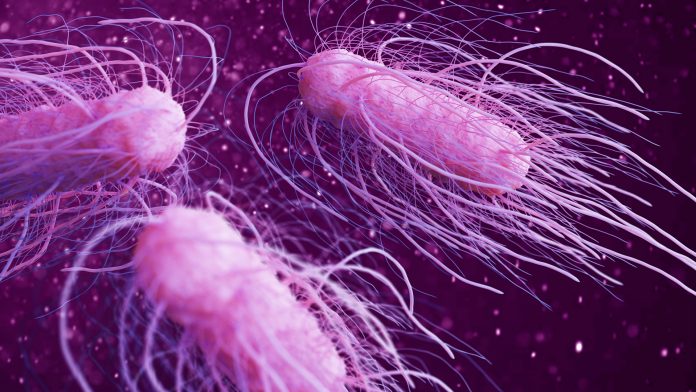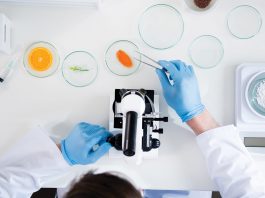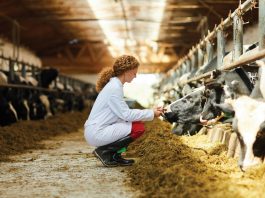Scientists have created a water-resistant antimicrobial coating that, when applied to surfaces that are regularly in contact with food, reduces the spread of salmonella and listeria by 99.9%.
In order to prevent food contamination, scientists from Texas A&M University have developed an antimicrobial coating designed to be applied to surfaces that are in regular contact with food. The coating can minimise contamination due to its germicidal and water-repellent properties.
Mustafa Akbulut, associate professor in the Artie McFerrin Department of Chemical Engineering, said: “Consuming contaminated raw foods causes hundreds of people to get sick annually, and so food contamination is not only a huge health concern but is also a significant economic burden.
“In our study, we show that our new dual-function coating – one that can both repel and kill bacteria – can greatly mitigate bacterial spread, averting cross-contamination.”
Fresh produce can be exposed to microorganisms at any stage of production. This exposure can cause foods to spoil and further contaminate other food items.
The danger of foodborne illnesses
There is a wide variety of pathogens that can cause foodborne illnesses. To remedy any infection after harvest, fresh produce is generally washed and then sanitised in powerful antimicrobials, like hydrogen peroxide or acetic acid.
Unfortunately, bacteria can survive this process by hiding in hard-to-reach places on the skins of fruits and vegetables. If the number of bacteria is large enough, they can form protective sheaths, called biofilms, that further protect them from the action of sanitisers.
Pathogens from contaminated food can spread either directly, by touching other food items, or indirectly, via food-contact surfaces. Currently, there are several ways to prevent indirect transmission ranging from antimicrobial surface coatings to antifouling polymer surfaces that act like springs to push bacteria away.
Innovating food safety
Akbulut and his research team have created an antimicrobial surface coating that is also extremely hydrophobic. They note that the antimicrobial coating’s water-repelling property can help food-contact surfaces retain their germicidal action much longer.
“Most bacteria can only survive in an aqueous environment,” said Akbulut. “If surfaces are superhydrophobic, then water, and along with it most of the bacteria will be repelled away. With fewer bacteria around, less germicides are used up, increasing the overall lifetime of the coating.”
The team chemically attached a thin layer of a compound called silica onto an aluminium sheet using high heat. Then, with this layer as a substrate, they added a mixture of silica and a naturally occurring germicidal protein found in tears and egg white, called lysozyme.
The silica-aluminium layer bound to the silica-lysozyme layer made a coating that had a rough texture when viewed at microscopic scales. The researchers noted that this submicroscopic roughness, or the tiny bumps and crevices on the coating, is key to superhydrophobicity.
“In general, if you increase roughness, the hydrophobicity of a material increases, but there is a limit,” said Shuhao Liu, a graduate student in the College of Engineering and the primary author of the study. “If the coating is too rough, bacteria can once again hide behind crevices and contaminate. So, we tweaked the proportion of silica and lysozyme so that the roughness yielded the best possible hydrophobicity without compromising the coating’s overall function.”
Curbing the growth of salmonella and listeria
When their superhydrophobic, lysozyme-infused coating was ready, the researchers tested if it was effective at curbing the growth of two strains of disease-causing bacteria, Salmonella typhimurium and Listeria innocua. Upon examination, they found that the number of bacteria on these surfaces was 99.99% less than that on bare surfaces.
Despite the high efficacy of their antimicrobial coating in preventing bacterial spread, the researchers said that more investigation is needed to determine if the coating works equally well for mitigating viral cross-contamination.
Although this antimicrobial coating lasts longer than others, the research team noted that their coating too would need to be reapplied after a certain amount of use. Thus, as a next step, Akbulut and his team are working on developing more permanent, dual functionality coatings.
“Our goal is to create smart surfaces that can avert any kind of pathogen from attaching and multiplying,” Akbulut said. “In this regard, we have developed surface coatings that can prevent bacteria from collecting on surfaces, which is one of the major reasons for cross-contamination. We are now working with researchers in agriculture to take our invention from bench to practice.”









